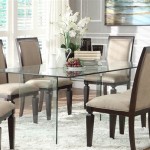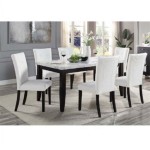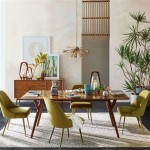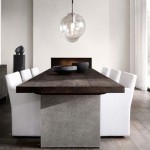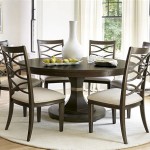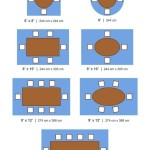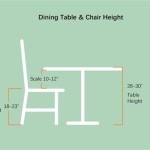Dining Room Table Chair Cushions: Enhancing Comfort and Style
Dining room table chair cushions are a practical and aesthetic addition to any dining space. Beyond their decorative appeal, they provide essential comfort during meals, gatherings, and everyday use. Understanding the diverse range of options, materials, and factors to consider when selecting these cushions is crucial to making an informed purchase that aligns with individual needs and preferences.
The primary purpose of a dining room table chair cushion is to improve the sitting experience. Hard, unforgiving chair surfaces can become uncomfortable during extended periods, making it challenging to enjoy meals or conversations. Cushions provide padding and support, distributing weight more evenly and reducing pressure points. This enhanced comfort encourages relaxation and allows individuals to fully engage in the dining experience.
Key Point 1: Material Composition and Durability
The material composition of a dining room table chair cushion significantly impacts its durability, comfort, and overall suitability for different environments. A wide range of materials are employed in their construction, each possessing unique characteristics.
Foam: Foam is a common filling material for chair cushions. Polyurethane foam is frequently used due to its affordability and versatility. However, its density and quality can vary considerably. High-density foam offers superior support and retains its shape longer than low-density foam, making it a more durable choice. Memory foam, another variant, conforms to the body's contours, providing exceptional comfort but potentially being more expensive.
Fiberfill: Fiberfill, typically made from polyester fibers, provides a softer and more plush feel compared to foam. It is generally less expensive than high-density foam and offers good cushioning. However, fiberfill cushions may flatten over time with consistent use, requiring more frequent replacement or fluffing to maintain their loft and support.
Down and Feather: Down and feather fillings offer exceptional softness and a luxurious feel. These natural materials are lightweight and provide excellent insulation, making them comfortable in both warm and cool environments. However, down and feather cushions require more maintenance than foam or fiberfill options. They may need regular fluffing to prevent clumping and require professional cleaning.
Outer Fabric: The outer fabric of the cushion is equally important. Durable fabrics, such as cotton canvas, linen, and synthetic blends like polyester or olefin, offer resistance to wear and tear. These fabrics are generally easier to clean and maintain. Performance fabrics, treated with stain-resistant coatings, are a good choice for households with children or pets. Consider the fabric's texture and colorfastness to ensure it complements the dining room décor and withstands regular washing.
The selection of materials should be guided by factors such as the frequency of use, the environment (e.g., households with children or pets), and the desired level of comfort and maintenance. Investing in high-quality materials can result in longer-lasting cushions that provide consistent comfort and maintain their aesthetic appeal over time.
Key Point 2: Design and Style Considerations
Dining room table chair cushions play a significant role in enhancing the overall aesthetic of the dining area. Their design, color, pattern, and shape can contribute to the room's style and atmosphere. Careful consideration of these factors is crucial to selecting cushions that complement the existing décor and reflect personal taste.
Color and Pattern: The color and pattern of the cushions can significantly impact the room's visual appeal. Solid colors offer a clean and minimalist look, while patterns can add visual interest and personality. Choose colors that complement the existing color scheme of the dining room. Consider using accent colors to add pops of vibrancy and create visual harmony. Patterns can range from subtle textures to bold geometric designs, floral prints, or traditional motifs. The choice of pattern should be consistent with the overall style of the room. For example, a modern dining room might benefit from geometric patterns or solid colors, while a more traditional setting might suit floral prints or classic stripes.
Shape and Size: The shape and size of the cushions should be appropriate for the chairs they will be used on. Common shapes include square, round, and rectangular. The cushion should fit snugly on the chair seat without overhanging or being too small. Measure the chair seat before purchasing cushions to ensure a proper fit. Consider the thickness of the cushions as well. Thicker cushions offer more padding and comfort, but they may also raise the seating height, which could affect the overall dining experience. A balanced approach is essential to ensure both comfort and practicality.
Style and Detailing: The detailing of the cushions can add a touch of elegance and refinement to the dining area. Features such as piping, tufting, and button accents can enhance the visual appeal of the cushions and complement the overall style of the room. Piping, a decorative trim around the edge of the cushion, can add definition and visual interest. Tufting, the process of securing fabric to the filling at regular intervals, creates a textured surface and adds a touch of sophistication. Button accents can provide a focal point and enhance the cushion's visual appeal. The choice of detailing should align with the overall style of the dining room. A formal dining room might benefit from cushions with intricate detailing, while a more casual setting might suit simpler designs.
When selecting dining room table chair cushions, it is essential to consider the overall style of the dining area and choose cushions that complement the existing décor. By carefully considering the color, pattern, shape, size, and detailing of the cushions, it is possible to create a cohesive and visually appealing dining space that reflects personal taste and enhances the dining experience.
Key Point 3: Maintenance and Care
Proper maintenance and care are essential to prolong the lifespan and preserve the appearance of dining room table chair cushions. Regular cleaning and appropriate handling can prevent stains, odors, and wear and tear, ensuring that the cushions remain comfortable and visually appealing for years to come.
Cleaning Procedures: The cleaning procedures for dining room table chair cushions vary depending on the materials used in their construction. Before cleaning, it is essential to check the manufacturer's care instructions to avoid damaging the cushions. Many cushions have removable covers that can be machine washed. Follow the recommended washing instructions, using a mild detergent and a gentle cycle. For cushions with non-removable covers, spot cleaning is often the best option. Use a damp cloth and a mild detergent to gently blot the stain, avoiding harsh chemicals or abrasive cleaners that could damage the fabric. For more stubborn stains, consider using a specialized stain remover specifically designed for upholstery. Always test the stain remover in an inconspicuous area first to ensure it does not discolor or damage the fabric.
Preventative Measures: Taking preventative measures can help minimize the need for frequent cleaning and extend the lifespan of the cushions. Consider using stain-resistant sprays to protect the fabric from spills and stains. Place placemats and coasters on the dining table to prevent food and drink spills from reaching the cushions. Encourage family members and guests to be mindful of their eating and drinking habits to avoid accidents. Regular vacuuming can help remove dust, crumbs, and other debris that can accumulate on the cushions over time. Use a brush attachment to gently vacuum the cushions, paying particular attention to seams and crevices where dirt can collect.
Storage Solutions: When not in use, store the cushions in a clean, dry place to prevent mildew and insect damage. Avoid storing the cushions in direct sunlight, as this can cause the fabric to fade over time. If storing the cushions for an extended period, consider placing them in airtight bags or containers to protect them from dust and moisture. Before storing the cushions, ensure they are completely dry to prevent mold and mildew growth. Regularly inspect the cushions for signs of wear and tear, such as rips, tears, or loose seams. Repair any damage promptly to prevent it from worsening. Consider replacing worn-out cushions to maintain the overall aesthetic and comfort of the dining area.
By following these maintenance and care tips, it is possible to keep dining room table chair cushions clean, comfortable, and visually appealing for years to come. Regular cleaning, preventative measures, and proper storage can significantly extend the lifespan of the cushions and ensure that they continue to enhance the dining experience.
Ultimately, the selection of dining room table chair cushions involves a careful consideration of material composition, design elements, and maintenance requirements. By prioritizing these key factors, individuals can make informed choices that result in cushions that provide lasting comfort, enhance the aesthetic appeal of the dining space, and contribute to a more enjoyable dining experience.

How To Easily Reupholster Dining Seat Cushions Diy Beautify Creating Beauty At Home

How To Choose The Best Dining Room Chair Cushions Barnett Home Decor

Farmhouse Kitchen Chair Cushions Barnett Home Decor

Hayden Beige Dining Chair Pads Latex Foam Fill Reversible Barnett Home Decor

Custom Dining Room Chair Cushions Seat

How To Recover Seat Cushions Thistle Key Lane

Dining Chair Cushions Barnett Home Decor Made In Usa With American Or Imported Fabrics Page 4

Classic Café Dining Chair Cushion Set Of 2 West Elm

Dining Chair Cushion Makeover Stitched In Color

Windsor Dining Chair Cushion Set Of 2 West Elm

